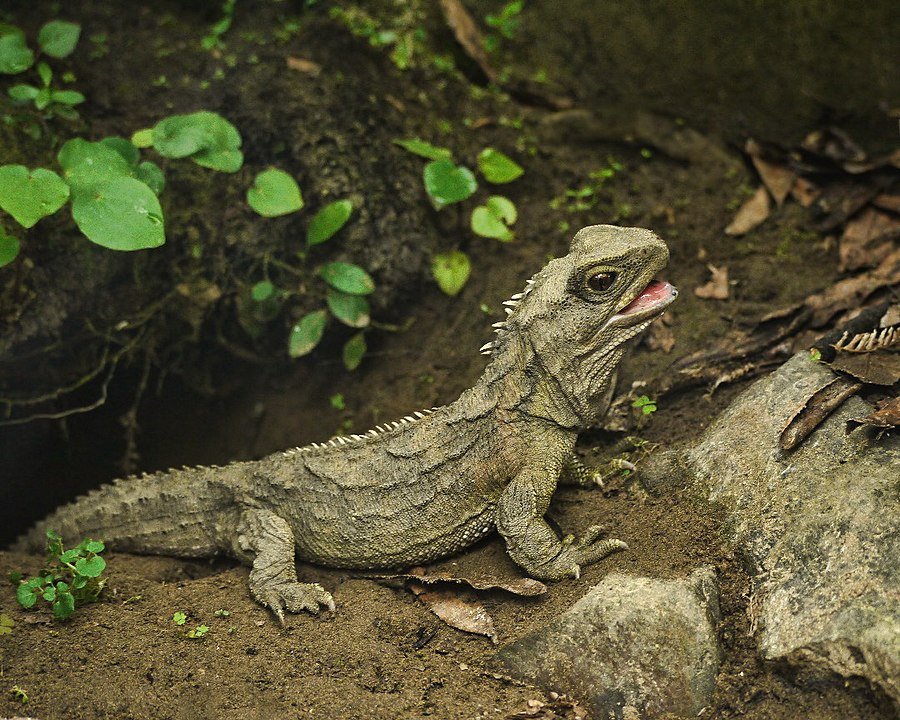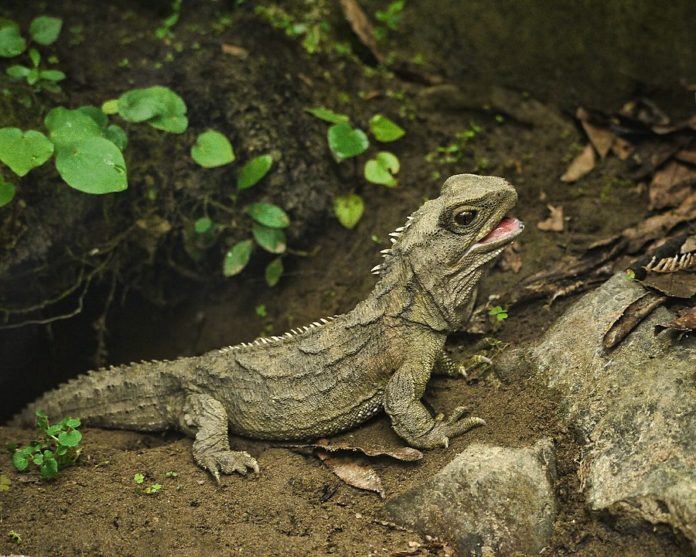
Credit: Sid Mosdell
The genome sequencing of a rare nocturnal animal (Sphenodon punctatus) only found in New Zealand has amazed scientists. The genomic results have placed it as neither a reptile, a mammal nor a bird but a combination of all! Its genomic architecture is so uncommon, similar to no other previously recorded.
This single species reptile is commonly known as the Tuatara. And its place in the tree of life has always been a controversial topic until now. With its genome sequencing, scientists found out that Tuatara’s originated about 250million years ago in the Triassic period, the time of the earliest known dinosaurs.
The study also revealed that it shares a genome of both mammals and reptiles which is highly uncommon. This was the key fact that placed Tuatara’s last shared ancestry way early in the evolutional history. To be exact a 250 million years earlier!
According to Professor David Adelson of Adelaide University, “The tuatara genome contained about 4% jumping genes that are common in reptiles, about 10% common in monotremes (platypus and echidna) and less than 1% common in placental mammals such as humans,” Jumping genes are sequences in the DNA structure that can change its position within a genome resulting or reversing mutations in a cell. Tuatara’s genome is said to be one of the largest genomes in the animal kingdom, even larger than the human genome.
Now the results have firmly placed Tuatara, between reptiles and snakes in the evolutional tree. But the fascinating fact is ever since they split from the tree of life, about 250million years ago, they have been their own kind. Even the Primates evolved about 65 million years ago. And our ancestor hominids split from the branch only 6 million years ago. So considering these, 250 million years is a very long time to be the same animal until now.
Tuataras are special creatures. They have a life span of 100 years. They can bear very cold temperatures or hold their breath up to an hour. Their hatchlings have a ‘third eye’ to see light. Tuataras are a cannibal and a carnivore species who eat their own and other insects, reptiles, eggs and birds. New Zeland’s local Maori tribes call Tuatara the, ‘taonga’ meaning the special treasure! And now we know why!
The study which has been published in the journal Nature, was a combined effort from the University of Adelaide, the South Australian Museum, Otago University in New Zealand and a global team.

